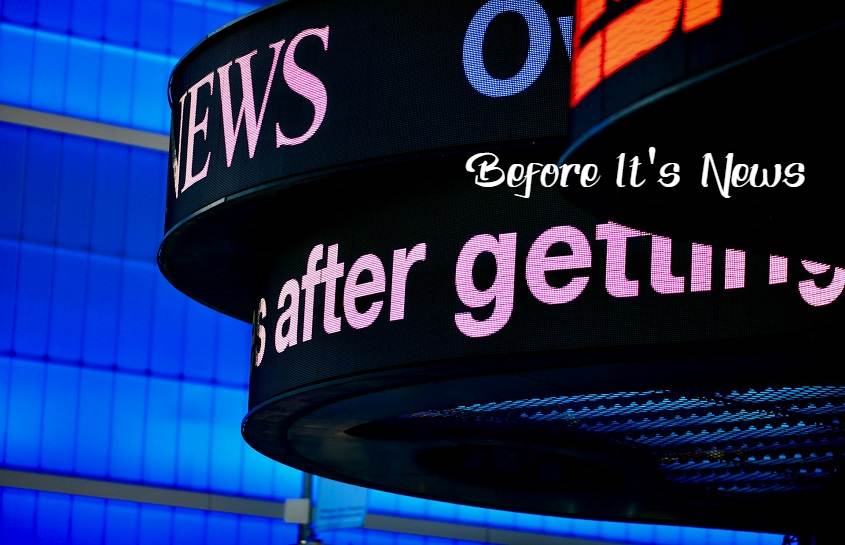There has been a dramatic change in the media scenario over the last two decades. From the dominance of traditional newspapers and TV channels to the emergence of independent voices on the Internet, Shift has strengthened a series of material creators. Before It’s News, one of the early and controversial pioneers of this movement was a digital platform that invited users to publish news and stories independently. Its role in the design of online stories has been both impressive and debated.
Before It’s News came when the belief in the mainstream media fell, and the hunger for an alternative approach increased. Its impact on digital journalism, information dissemination and public opinion is complex, and questions reliability, freedom and responsibility.
What is Before It’s News?
At the core, Before It’s News is a user-related news forum, lets someone submit stories, comments or even an alert report. The site was created in 2009 and marketed itself as a place for news that mainstream media allegedly ignored or oppressed. It quickly became popular with the audience in search of an alternative approach to politics, science, health and world programs.
The open-door policy of the platform attracted a wide range of contributors. Some used it to highlight corruption or share scientific principles; However, others posted the principles of rejected claims and conspiracy theories. This double nature has defined the legacy of the site.
Redefining News in the Digital Age
The arrival of Before It’s News marked a significant turn in how people consumed the media. This blurred line between civil journalism and editorial journalism. By eliminating traditional gate guards, the website allowed users to tell stories on their terms. By doing so, it voted society and individuals who felt marginalized or ignored by cultural monuments.
But this freedom also brought challenges. Without professional editorial oversight, articles ranged from insightful to irresponsible. The site became known as much for sensational headlines as for whistleblower revelations.
Still, its reach cannot be underestimated. Many readers turn to Before It’s News recent posts not just for alternative information, but also for views that challenge mainstream narratives.
Read More: Milemax Fuel Saver- Know about Benefits and How Does it Work?
Virality and Influence: The Top 50 Stories

There’s something about the wild, unfiltered nature of the internet that makes strange stories spread like wildfire—and Before It’s News knows how to ride that wave. Scroll through its most-read articles and you’ll notice a pattern: big claims about hidden science, global conspiracies, secret tech, or political cover-ups. You don’t have to believe a word of it to see why people click.
Important part is these stories make people fee and drive their popularity in large scale. Mostly there trigger a strong emotional response—fear, anger, immense curiosity, even hope. And when something hits you on that gut level, you’re more likely to share it. That’s how a single article ends up all over your social feed in a matter of hours.
Of course, not everyone’s thrilled about that. Critics say this kind of content can spread misinformation or stir up confusion. But others argue that mainstream media does something similar—just wrapped in a more polished package.
Democratization of Information or the Rise of Misinformation?
A major criticism of Before It’s News is its role in spreading unverified or misleading content. With minimal editorial control, stories often bypass traditional fact-checking procedures. As a result, articles can present speculative theories as facts, especially when covering topics like pandemics, elections, or climate change.
On the other hand, the site serves as a counterbalance to corporate media conglomerates. For readers who distrust these organizations, Before It’s News most recent updates offer a fresh—if sometimes controversial—lens on current events.
This democratization of media, where anyone with an internet connection can publish and be heard, is both the site’s greatest strength and its most criticized flaw.
Impact on Public Perception and Behavior
The influence of Before It’s News goes beyond pageviews and social shares. It has affected how people interpret the news, trust institutions, and make decisions. In some cases, content from the site has inspired political activism, health decisions, and even legal action.
For instance, during major global crises like the COVID-19 pandemic or contentious elections, stories on the platform have swayed public opinion. While some information turned out to be ahead of the curve, other stories spread harmful myths.
This mixed record underscores the complexity of Before It’s News’s role in shaping modern thought. It’s not simply about right or wrong, but about how digital platforms affect belief systems and social discourse.
Search Trends and Continued Relevance
Despite the rise of newer platforms like Substack or Medium, Before It’s News maintains a dedicated following. Search engine trends still show consistent interest in phrases like “Before it’s news most recent” and “Before it’s news top 50.” This indicates that the platform remains a destination for those seeking out unfiltered or alternative perspectives.
The site’s longevity also reveals something deeper: a lasting hunger for content that falls outside the traditional narrative. Whether driven by distrust, curiosity, or ideology, many users continue to seek voices that challenge the consensus.
Navigating the Platform: What Should Readers Know?
If you’re new to Before It’s News, approaching the site with a critical mindset is essential. Here are a few tips for responsible consumption:
- Check Sources – Many articles lack citations. Be cautious and cross-reference claims with other sources.
- Watch for Sensationalism – Headlines are often designed for maximum impact. Read beyond them before forming opinions.
- Verify Author Credentials – Contributors vary widely in expertise. Look up the background of authors if possible.
- Use it as One of Many Sources – Don’t rely solely on Before It’s News. Balance your media diet with diverse sources.
By following these steps, readers can benefit from alternative viewpoints while protecting themselves from misinformation.
Cultural Legacy and the Future of Alternative Media
The legacy of Before It’s News is tied to the broader story of internet journalism. It demonstrated that gatekeeping wasn’t the only way to maintain a news ecosystem, but also revealed the risks of total decentralization.
The future may involve a hybrid model, where alternative voices have platforms, but also operate with transparency and accountability. New tools, such as blockchain verification and AI-assisted fact-checking, may eventually help sites like Before It’s News maintain both freedom and integrity.
Meanwhile, interest in the platform continues. The phrase “before it’s the news” even finds its way into broader discussions about where the truth begins—before it’s filtered, edited, and packaged for mass consumption.
Conclusion: A Platform That Refuses to Be Ignored
Before It’s News is still one of the most stimulating and impressive alternative news platforms on the Internet. The legacy is composed – equal parts empowerment and chaos. But its role in challenging mainstream, expressing independent stories and re -defensing digital media is undisputed.
Whether you see it as a tool for the truth or the tools of misinformation, its effect does not deny. As readers, our job is to consider such platforms to assess and know that freedom and important thinking go by hand.
In a world where the boundaries between facts and opinions often become blurred, Before It’s News reminds us that the future of the media is not just about who talks, but who is listening carefully, asking questions and investigating.
